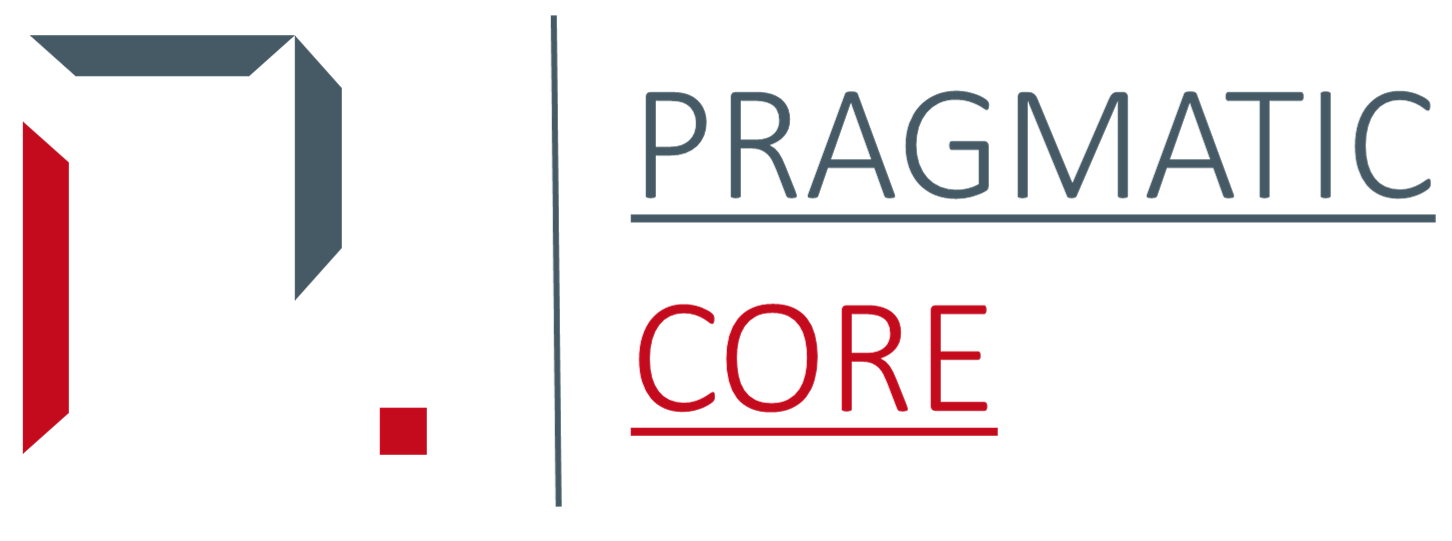Key Points:
- ‘Revenue per Employee,’ ‘Inventory Turnover,’ and ‘Capacity Utilization’ reveal organizational efficiency. Complexity, excess inventory, and management optimization gaps affect efficiency.
- In today’s global company environment, process bottlenecks, and resource misallocation must be identified and fixed. Small inefficiencies add up and limit organizational potential.
- Set exact targets, align departments, invest in technology, and optimize business units to boost efficiency using the C-Suite’s strategic role. Leaders must mitigate efficiency risks such as optimization gaps, insufficient analytics, change opposition, and responsibility uncertainty.
Today’s global corporate environment is extremely cutthroat, making operational efficiency a must-have. It’s the foundation for businesses that want to boost earnings, cut expenses, and maintain a competitive edge. As firms work to maximize scarce resources, boost productivity, and increase customer value, the importance of efficiency has grown. In this complex environment, where global firms operate across national boundaries and functional domains, maximizing efficiency calls for a nuanced approach that balances micro and macro-level considerations.
Key efficiency indicators, micro and macro factors, and the parts played by upper management, middle managers, and small and medium-sized enterprises (SMEs) are discussed below. This all-encompassing method intertwines strategic goals to better position multinational corporations around the world to reduce waste, streamline processes, and thrive in the exciting years ahead. Management gurus at McKinsey, BCG, and Bain & Company all agree that small efficiency gains of 2% to 3% can have a major impact on expenses and bottom lines.
Indicators of Organizational Efficiency
Efficiency serves as a litmus test for an organization’s overall health and functionality, revealing its effectiveness through a blend of quantitative metrics and qualitative indicators. One critical measure is ‘Revenue per Employee,’ where a high figure indicates productivity, while a consistent decline might signal inefficiency. Another vital gauge is ‘Inventory Turnover,’ where swift rotations indicate deft management of working capital, while languid movements hint at resources being squandered in the organizational machinery. Capacity Utilization is equally telling, with levels exceeding 70% reflecting resource optimization, whereas subpar utilization signals redundant capacity. Shortened ‘Cycle Times’ propel efficiency by expediting critical processes while ballooning ‘Administrative Costs’ in relation to revenue underscore operational inefficiencies that warrant attention. These indicators are valuable tools for assessing and improving overall organizational efficiency.
Qualitative signs are equally critical
Qualitative signs are equally critical, and they often serve as insightful markers of organizational efficiency. One key qualitative indicator is the presence of complex processes within the organization. Elaborate and convoluted procedures can consume valuable time and hinder overall productivity. Additionally, the existence of excess inventory, whether it be a stockpile of materials or finished goods, can signify inefficiency in resource management.
Another qualitative aspect to consider is idle capacity, which occurs when facilities and labor resources are underutilized. This underutilization represents a missed opportunity for optimizing operations. Furthermore, shortcomings in automation can be indicative of inefficiency. Overreliance on manual processes over automated systems can lead to bottlenecks and decreased efficiency.
Additionally, the presence of silos and coordination deficits within the organization can be detrimental to efficiency. When departments operate in isolation rather than engaging in seamless collaboration, it can lead to duplicated efforts and inefficient resource allocation. Lastly, employee discontent is a critical qualitative sign to monitor. Low engagement levels and a high turnover rate among employees can be attributed to the complexities and inefficiencies within the organization’s operations. Addressing these qualitative indicators is essential for enhancing overall organizational efficiency.
Conversely, indicators of efficiency include
- Streamlined Processes: Simplified, standardized operations ensure swift execution.
- Just-in-Time Inventory: Low inventory levels minimize waste through rapid turnover.
- Optimal Asset Use: Leveraging production capacity economically.
- Technology Integration: Automated systems weaving through all processes.
- Cross-Functional Synergy: Breaking silos for seamless operations.
- Engaged Workforce: Empowered staff deliver high productivity and minimal turnover.
Micro Efficiency Factors: An Imperative Focus in 2023
In the present business landscape, defined by global interconnectedness, technological disruption, and geopolitical uncertainties, unearthing inefficiencies is crucial. However, the essence lies in identifying and rectifying micro-level inefficiencies across the organizational spectrum.
Why the micro level? Small inefficiencies accumulate into major obstacles, limiting an organization’s potential. Micro factors comprise process bottlenecks, unclear responsibilities, skills gaps, resource misallocation, and data scarcity.
Microscopic analysis aids in systemic optimization, incorporating frontline insights to streamline operations. The forthcoming recession and global volatility in 2023 demand granularity in assessing efficiency to ensure resilience and prosperity.
The C-Suite’s Strategic Role in Efficiency
In today’s highly competitive and constantly evolving corporate environment, the C-Suite plays a crucial role in driving organizational effectiveness. This kind of superior management is crucial for cutting costs, increasing output, and making strategic advances.
Strategies to foster organization-wide efficiency
> Precise Efficiency Goals and Metrics: Leadership sets goals linked directly to corporate strategy, with quantifiable targets like cost reduction or productivity gains.
> Alignment of Departments and Incentives: Cross-departmental alignment and shared metrics nurture collaboration.
> Investment in Technology and Automation: The C-Suite identifies and funds technology investments to supplant outdated processes.
> Efficient Change Management: Effective communication, training, and leadership mitigate disruptions.
> Optimization of Business Units and Headcount: Tough decisions to resize or eliminate non-vital units.
> Strategic Outsourcing and Offshoring: Judicious outsourcing enhances efficiency while managing risks.
Mitigating Organizational Efficiency Risks
Mitigating risks associated with organizational efficiency is paramount for effective leadership. While efficiency holds immense promise, it also entails certain risks that leaders must skillfully navigate to ensure the organization’s health and success. One of these risks is communication lapses and the formation of silos within the organization. When departments operate in isolation, it can lead to communication breakdowns, hindering the flow of information crucial for efficient operations.
Another critical risk to address is weak analytics and forecasting. Inefficient data utilization and a lack of robust analytics can impede proactive decision-making, making it challenging to optimize processes effectively. Additionally, resistance to change is a common obstacle to efficiency initiatives. Inadequate change management can derail well-intentioned efforts to enhance efficiency within the organization.
Furthermore, accountability ambiguity can pose a significant risk to organizational efficiency. When responsibilities are unclear, it hinders the smooth execution of tasks and decision-making processes. Legacy systems and processes, particularly outdated ones, can act as roadblocks to innovation and operational efficiency. Skill deficits among the workforce also present a risk, as inadequacies in skillsets can impede the organization’s ability to adapt to evolving demands.
Blind cost-cutting is another risk that must be approached cautiously. Indiscriminate cuts in operational costs can erode the quality of products or services and negatively impact customer satisfaction. Lastly, there is a risk associated with external dependence overload, especially in the context of outsourcing. Overreliance on external partners can compromise control over critical processes.
To mitigate these risks effectively, a measured approach to change is essential. This approach should be bolstered by robust communication, data-driven strategies, and strategic outsourcing when appropriate. By proactively addressing these risks, organizations can enhance their overall efficiency while minimizing potential pitfalls.
Effective Resource Management for Enhanced Efficiency
Effective Optimization of resources across the enterprise requires centralized, targeted efforts beyond C-suite. In order to play a pivotal role, C-Suite must manage to bring about cohesiveness across stakeholders to maximize efficiency by:
→ Centralizing Processes: Consolidating processes enhances consistency and efficiency.
→ Technology Leverage: Automation enhances speed and accuracy.
→ Workforce Planning and Cross-Training: Address skill gaps and optimize labor.
→ Data-Driven Capacity Planning: Analytics fine-tune capacity management.
→ Product/Service Portfolio Rationalization: Focus on core, profitable offerings.
→ Avoid Over-engineering: Streamlined designs avert waste.
A comprehensive view of resources, technology deployment, cross-skilled workforce, and strategic focus all amplify productivity.
Efficiency Challenges for SMEs
Small and midsize enterprises (SMEs) face distinct challenges:
– Staffing and Budget Constraints: Limited resources hinder transformation.
– Lack of Specialized Skills: SMEs often rely on generalists.
– Access to Capital: Limited funding slows efficiency initiatives.
– Reliance on Manual Processes: Less IT reliance leads to inefficiencies.
– Capacity Constraints: Smaller operations face tighter margins.
– Cash Flow Sensitivities: Reduced cushion for inefficiency.
– Supplier Power Dynamics: Smaller clients receive subpar service.
Though challenging, SMEs can optimize efficiency by emphasizing core competencies, cloud-based systems, and strategic partnerships.
Middle Managers: Enablers of Efficiency
Middle managers play a pivotal role in operationalizing efficiency:
+ Leading by Example: Managers must embody efficiency philosophies.
+ Identifying Opportunities: Managers spot bottlenecks and advocate solutions.
+ Training and Development: Address skills gaps in teams.
+ Metrics Monitoring: Track KPIs, analyze trends, and report progress.
+ Technology Advocacy: Identify technology-driven efficiency improvements.
+ Communicating and Gaining Buy-In: Middle managers communicate efficiency visions and benefits to their teams.
These managers bridge strategy and implementation, ensuring efficient operations.
Embracing Efficiency for Future Success
These days, efficiency is the cornerstone of any business’s chances of success in the competitive global marketplace. Eliminating time- and energy-sucking activities is essential. Organizations can discover efficiencies everywhere throughout the value chain if they combine micro-level precision with macro-level strategy.
In order to accomplish this, a detailed analysis of procedures, personnel, and tools is required. Automation, standardization, collaboration, and resource optimization are all tools that may help firms succeed when data is used as a driving force at all levels of management. The combination of technology and people is the driving force behind an ever-improving culture. Companies constantly improve productivity thanks to the efforts of forward-thinking executives, responsible middle managers, and engaged employees. Each incremental improvement eventually leads to a dramatic shift. Every second counts when it comes to efficiency, and can add up to significant savings over time. Companies on a global scale can best prepare for future disruption by adopting a multifaceted strategy that takes into account both the micro and macro levels.


